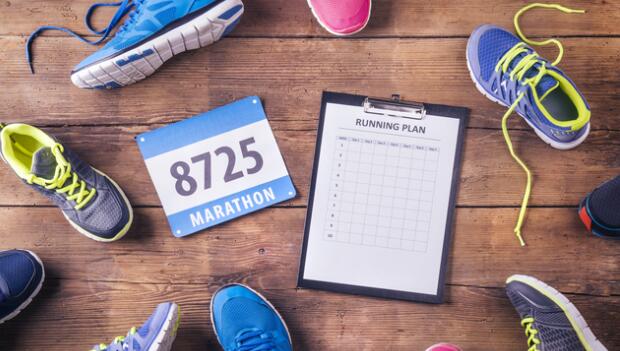
Running has the power to change your life and a great way to stay fit. Apart from health benefits, running helps boost happiness and optimism. Starting the sport can be daunting but, it need not be. Setting your sight on a marathon or race is one of the best ways to stay focused all along. Here’s your guide on getting started.
Training plan

You might be running to lose weight, stay fit or increase mobility and might want to train like Usain Bolt. But, a simple training plan is the most effective one, especially for a beginner.
Start with training 3 to 4 times a week with shorter 30-minute runs during the week and longer runs on the weekends. Run with regular walking breaks and don’t stress your body.
You can’t run a 5K in a day, so start small. Start with running 1 mile every week, then slowly increase the distance.
Follow the Run-Walk-Run rule
It is a simple but life-changing method. Run for a short segment, then take a walking break. Repeat it. It helps in increasing recovery rates and reducing exhaustion. While starting, you might need to take walk breaks more frequently. This method helps in building stamina and endurance.
Keep track of your runs and walk breaks with a timer, smartwatch, or running apps on your phone.
Running form
There are two major types of running forms based on how your heels hit the ground. To lead with toes or to strike the ground with heels. Both these forms are correct, as long as you stick to your natural gait and complement it. The perfect running form includes:
- Head and ears in line with shoulders.
- Arms with elbows bent to 90 degrees, along with arm swings.
- Hands slightly cupped but not clenching.
- Breaths are inhaled through the nose and exhaled through the mouth.
- Ankles in a 10-degree bend, slightly leaning.
- And, feet hitting the ground (either type) but not leaping.
Targeted muscle training
You can run outdoors or on a treadmill but, you need to train your body to run better. Strength training 3 to 5 times a week is very beneficial for runners. Focus on your hip, upper body, and core strength training. Include a combination of planks, push-ups, dead bugs, plyometrics, etc. that target various muscle groups.
Strength training is helpful when combined with mobility and stability workouts every day.
Fuel and hydration
Never run on an empty stomach. Have a small healthy snack (half a sandwich, a muffin, granola bar, etc.)30 minutes before you go for a run. The proteins and carbs will provide energy and avoid burnouts.
Hydration is important. Water with added electrolytes can help replenish salts lost.
Drinking less water can lead to muscle cramps during runs. But, overhydration can lead to a decrease in blood sodium levels and eventually to hyponatremia.
Gear and equipment
Running does not need much equipment other than a decent pair of shoes and socks. Start with a comfortable running shoe that fits well. A good running shoe will help you avoid injuries and maintain form. Use snug-fitting socks made of breathable material.
You can time or track your runs with a smartwatch, activity tracker, or your phone. Apps like Strava, Nike run club, and Runkeeper track your path, pace and calories burnt.
Stretching is important
Stretching is just as important as running and training. It is proven to help in the prevention of muscle tears or strains. Make dynamic stretching exercises a part of your warm-up. Including lunges, butt-kicks, and squats in your warm-ups are a great idea. But don’t forget to do a full-body stretch once or twice a week.
They say that one run can change your life. Now, imagine how many runs can change your life? This is probably your chance to right up.
